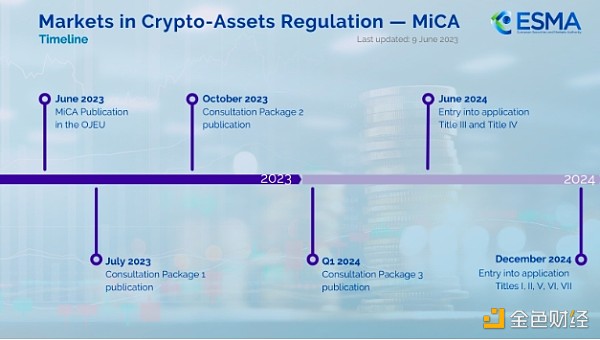Author: Vince Quill, CoinTelegraph; Compiler: Wuzhu, Golden Finance
On July 1, Circle co-founder and CEO Jeremy Allaire announced that the company became the first stablecoin issuer in the European Union to receive regulatory approval under the EU Crypto-Asset Market (MiCA) regulatory framework.
Under the new rules, Circle's USDC and EURC meet regulatory requirements and are effective immediately, which calms investors' concerns that they must redeem stablecoins or transfer funds to other digital assets in order to remain compliant.
Allaire then announced that Circle chose France as the company's European headquarters, citing France's forward-looking stance on digital asset regulation and Circle's partnership with the French Prudential Supervision and Resolution Authority (ACPR).
The Circle co-founder also reflected on the historic significance of the EU regulatory reform, the first comprehensive regulatory framework for digital assets, demonstrating the long road the asset class has come since its inception.
“The whole concept of legal digital currencies actually didn’t exist outside of early crypto circles. The concept of seeing stablecoins incorporated into major global laws of the financial system is unthinkable.”
MiCA Concerns and the Stablecoin Market
In response to the EU regulatory shift, several exchanges announced changes to their stablecoin policies and product offerings.

MiCA regulatory framework implementation timeline. Source: European Securities and Markets Authority
In June, cryptocurrency exchange and custody platform Uphold announced in an email to its European users that it would delist six stablecoins. These include Tether, Dai, TrueUSD (TUSD), Gemini dollar (GUSD), Pax dollar (USDP) and Frax Protocol (FRAX).
Bitstamp followed suit and delisted Tether’s EURT stablecoin later that month in response to the major change, despite being one of the first exchanges to list the digital fiat token.
Binance has similarly taken a similar, but softer approach to the new stablecoin regulations, adopting a “sell-only” strategy for certain stablecoin products in the European market. The world’s largest centralized exchange explained that it will not currently delist any stablecoins for its European users, instead choosing to label fiat equivalents as compliant or non-compliant and restrict certain market features for European customers.
 Catherine
Catherine




